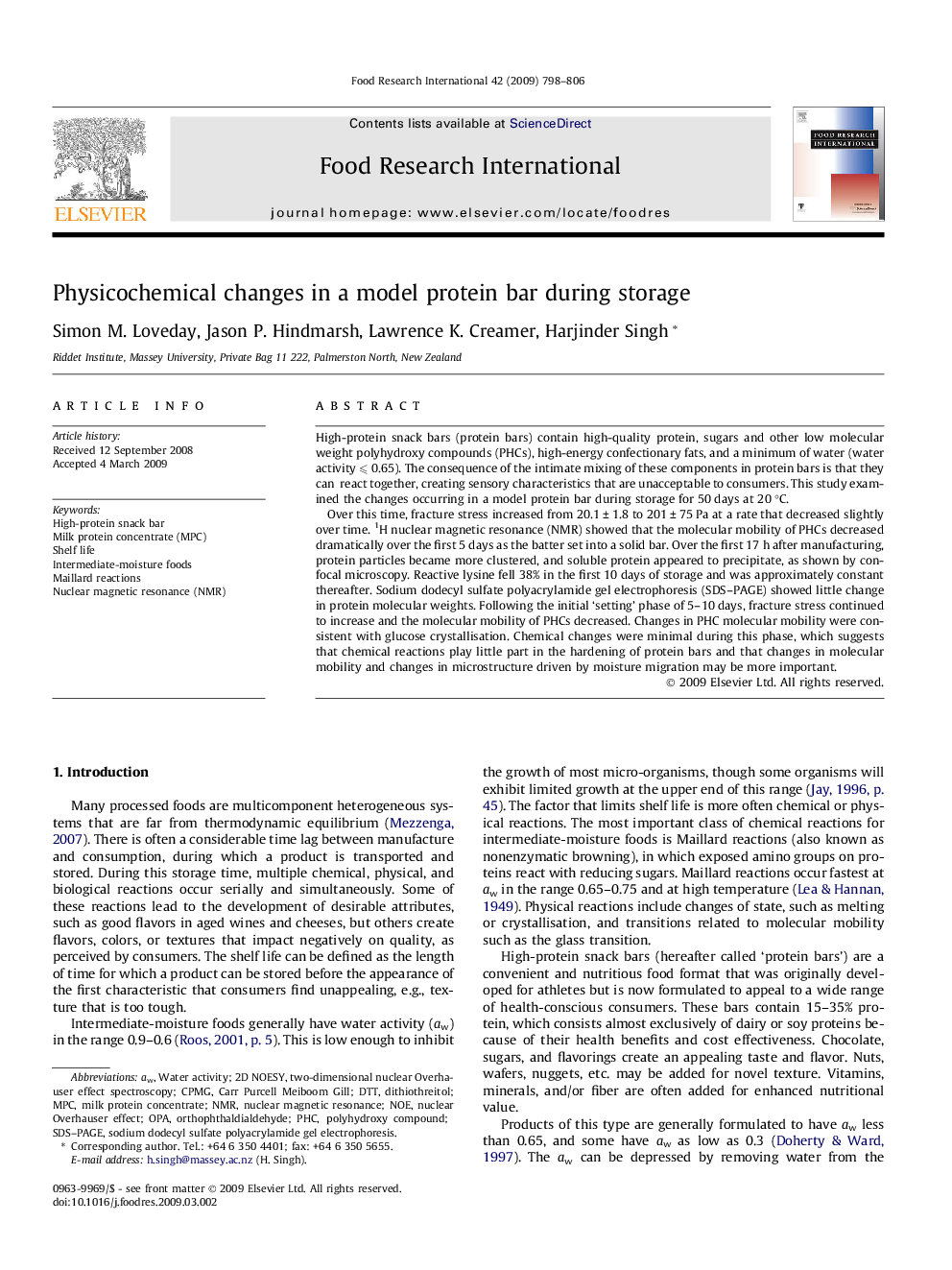| کد مقاله | کد نشریه | سال انتشار | مقاله انگلیسی | نسخه تمام متن |
|---|---|---|---|---|
| 4562807 | 1330729 | 2009 | 9 صفحه PDF | دانلود رایگان |

High-protein snack bars (protein bars) contain high-quality protein, sugars and other low molecular weight polyhydroxy compounds (PHCs), high-energy confectionary fats, and a minimum of water (water activity ⩽ 0.65). The consequence of the intimate mixing of these components in protein bars is that they can react together, creating sensory characteristics that are unacceptable to consumers. This study examined the changes occurring in a model protein bar during storage for 50 days at 20 °C.Over this time, fracture stress increased from 20.1 ± 1.8 to 201 ± 75 Pa at a rate that decreased slightly over time. 1H nuclear magnetic resonance (NMR) showed that the molecular mobility of PHCs decreased dramatically over the first 5 days as the batter set into a solid bar. Over the first 17 h after manufacturing, protein particles became more clustered, and soluble protein appeared to precipitate, as shown by confocal microscopy. Reactive lysine fell 38% in the first 10 days of storage and was approximately constant thereafter. Sodium dodecyl sulfate polyacrylamide gel electrophoresis (SDS–PAGE) showed little change in protein molecular weights. Following the initial ‘setting’ phase of 5–10 days, fracture stress continued to increase and the molecular mobility of PHCs decreased. Changes in PHC molecular mobility were consistent with glucose crystallisation. Chemical changes were minimal during this phase, which suggests that chemical reactions play little part in the hardening of protein bars and that changes in molecular mobility and changes in microstructure driven by moisture migration may be more important.
Journal: Food Research International - Volume 42, Issue 7, August 2009, Pages 798–806